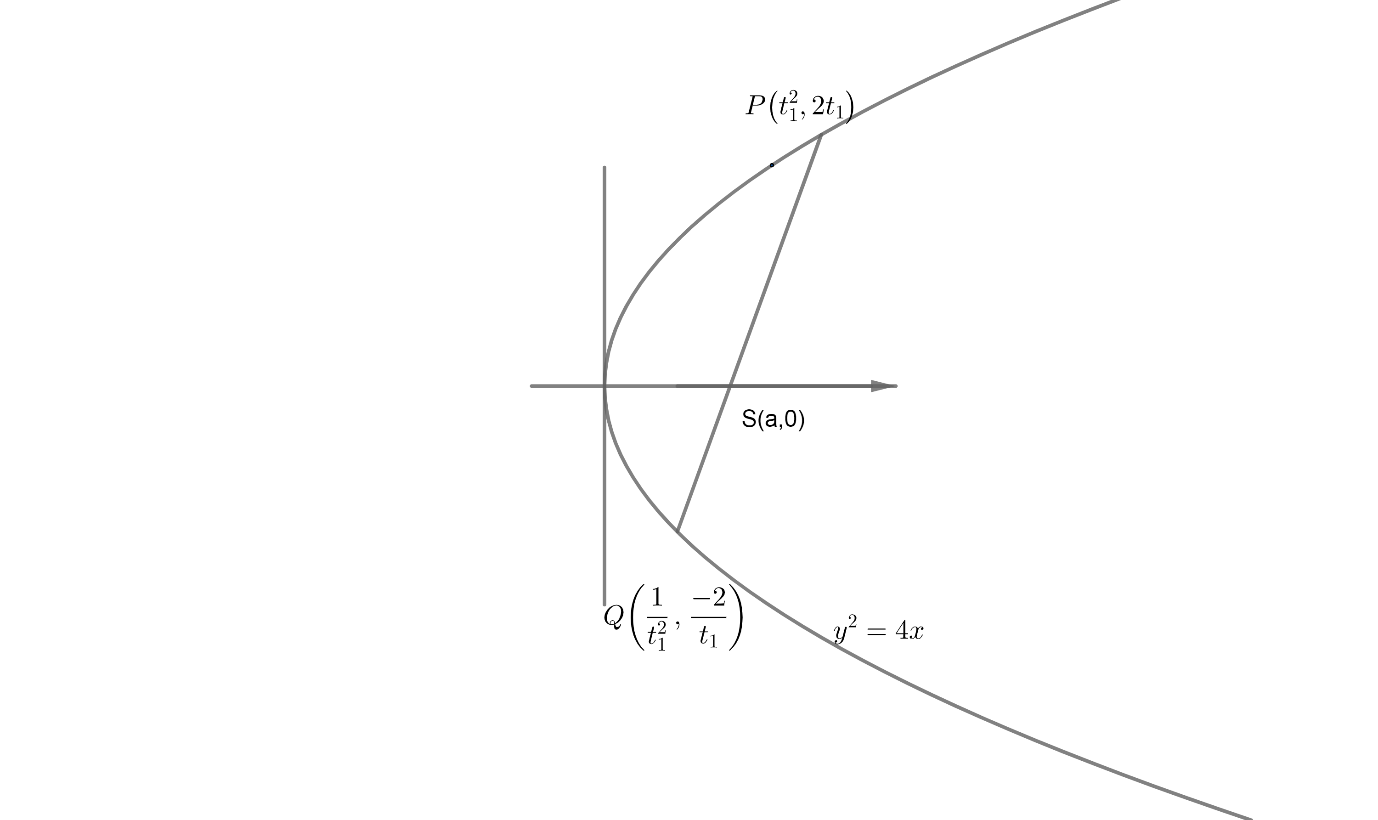Question
Question: A circle \('S'\) is described on the focal chord of the parabola \({{y}^{2}}=4x\) as diameter. If th...
A circle ′S′ is described on the focal chord of the parabola y2=4x as diameter. If the focal chord is inclined at an angle of 45∘ with an axis of x , then
which of the following is/are true?
(A) Radius of the circle is 4.
(B) Centre of the circle is (3,2)
(C) The line x+1=0 touches the circle
(D) The circle x2+y2+2x−6y+3=0 is orthogonal to ′S′
Solution
Hint: Consider the directrix of the circle touching the parabola as x+1=0 and
frame the equation of the circle.

From the figure, it shows the parabola y2=4x
Let P and Q be the extremities of the focal chord.
Where Pis (t12,2t1)
Q is (t121,t1−2)
And it's given in the question that the focal chord PQ is inclined at an angle of 45∘ with x−axis.
The directrix of the circle touches the parabola
i.e. directrix of circle ⇒x+1=0...................(1)
Now the equation of the circle can be written as from Pand Q
